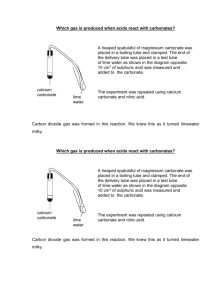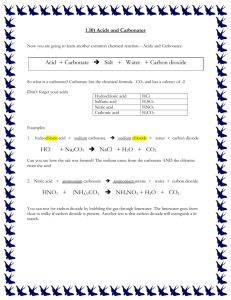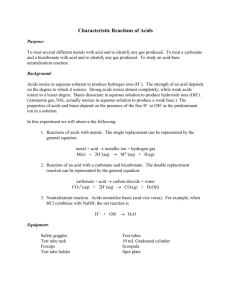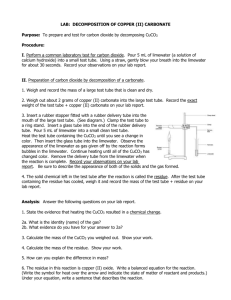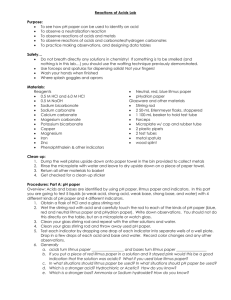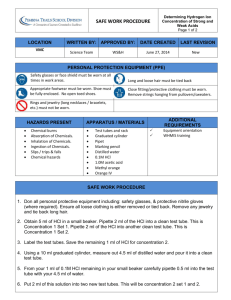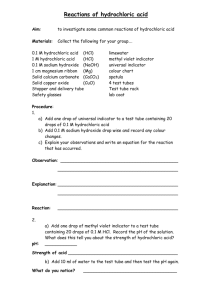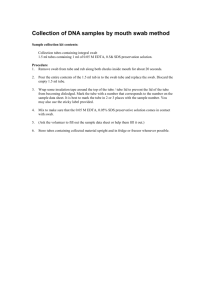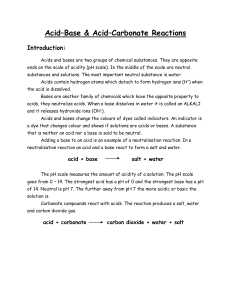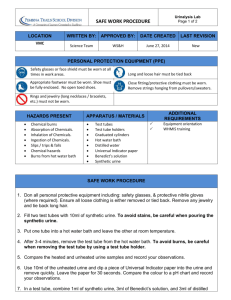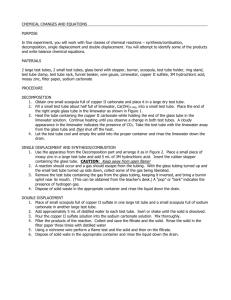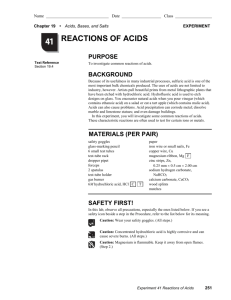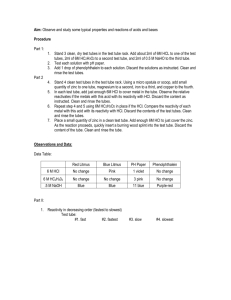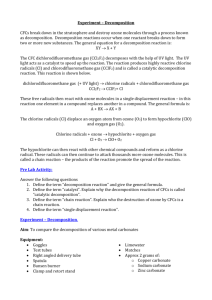Properties of Acids & Bases
advertisement
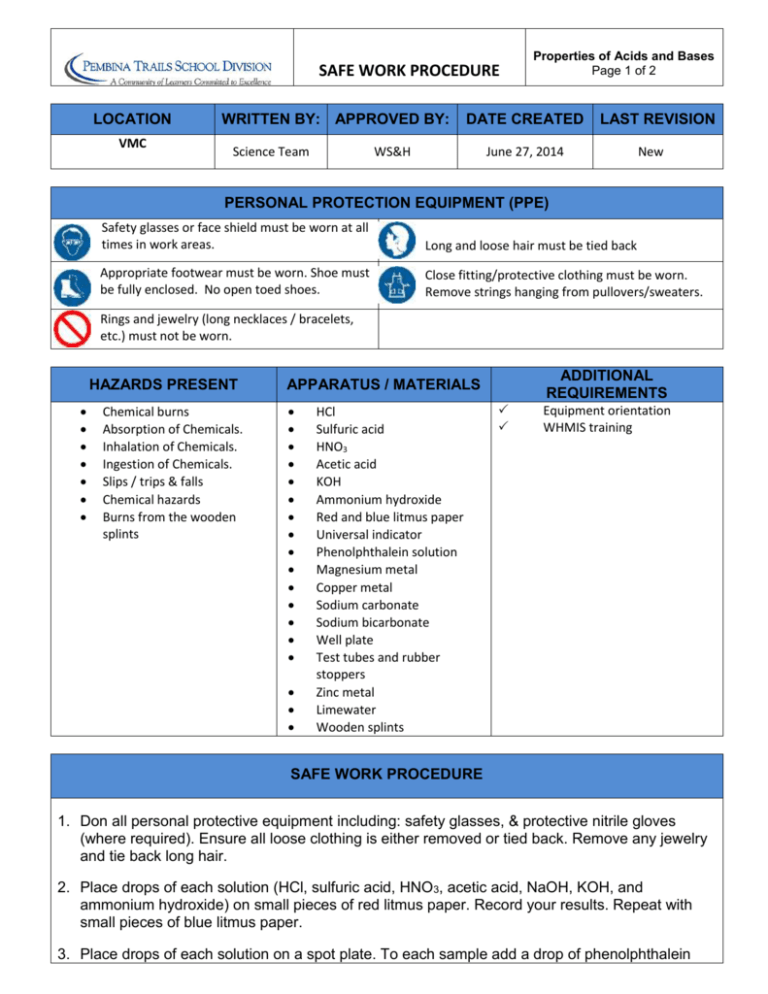
SAFE WORK PROCEDURE LOCATION VMC WRITTEN BY: APPROVED BY: Science Team Properties of Acids and Bases Page 1 of 2 DATE CREATED WS&H LAST REVISION June 27, 2014 New PERSONAL PROTECTION EQUIPMENT (PPE) Safety glasses or face shield must be worn at all times in work areas. Long and loose hair must be tied back Appropriate footwear must be worn. Shoe must be fully enclosed. No open toed shoes. Close fitting/protective clothing must be worn. Remove strings hanging from pullovers/sweaters. Rings and jewelry (long necklaces / bracelets, etc.) must not be worn. HAZARDS PRESENT Chemical burns Absorption of Chemicals. Inhalation of Chemicals. Ingestion of Chemicals. Slips / trips & falls Chemical hazards Burns from the wooden splints ADDITIONAL REQUIREMENTS APPARATUS / MATERIALS HCl Sulfuric acid HNO3 Acetic acid KOH Ammonium hydroxide Red and blue litmus paper Universal indicator Phenolphthalein solution Magnesium metal Copper metal Sodium carbonate Sodium bicarbonate Well plate Test tubes and rubber stoppers Zinc metal Limewater Wooden splints Equipment orientation WHMIS training SAFE WORK PROCEDURE 1. Don all personal protective equipment including: safety glasses, & protective nitrile gloves (where required). Ensure all loose clothing is either removed or tied back. Remove any jewelry and tie back long hair. 2. Place drops of each solution (HCl, sulfuric acid, HNO3, acetic acid, NaOH, KOH, and ammonium hydroxide) on small pieces of red litmus paper. Record your results. Repeat with small pieces of blue litmus paper. 3. Place drops of each solution on a spot plate. To each sample add a drop of phenolphthalein SAFE WORK PROCEDURE Properties of Acids and Bases Page 2 of 2 indicator solution. Record your results. Repeat the test with universal indicator. 4. Test each metal (magnesium, copper, sodium carbonate, sodium bicarbonate) with each acid (HCl, sulfuric acid, HNO3, and acetic acid). Place small samples of each metal into different test tubes. Add 2 ml of each acid to each of the test tubes and record your observations. 5. Place 2 ml of the carbonate and hydrogen carbonate solutions into separate test tubes. Add drops of each acid to each test tube and record your observations. 6. Place a small amount of zinc into a test tube. Add 2 ml of 6.0 M HCl. As the reaction proceeds, hold a second test tube inverted over the first test tube for about one minute. Without turning the second test tube upright, bring a burning wooden splint near the mouth of the test tube and note the observations. 7. Place 8 ml of limewater into a test tube. Place a few crystals of calcium carbonate into a second test tube. Add 3 ml of 6 M HCl to the solid. Insert a rubber stopper end of the gas deliver tube into the test tube containing the acid and calcium carbonate. Put the open end of the tube into the limewater solution and bubble gas into the solution. Record your observations. 8. Clean up your workstation. REGULATORY REQUIREMENTS WS&H Act W210, Section 4, 5 Mb. Regulations 217/2006, Part 16, (Machines / Tools & Robots) Sections 16.1-16.18) Part 35, (WHMIS Application) Part 36, (Chemical & Biological Substances Application)

